University of Edinburgh
Type of resources
Topics
Keywords
Contact for the resource
Provided by
Years
Formats
Representation types
Update frequencies
-
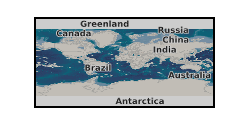
Technical report (2009) commissioned by Christian Aid and written by researchers from the University of Edinburgh and the University of Surrey. It aims to explore the prospects for carbon capture and storage (CCS) to play a significant role within global action to mitigate the risk of climate change, with a focus on India. Available for download at http://hdl.handle.net/1842/15679.
-
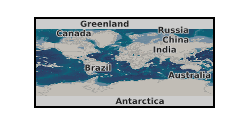
This dataset relates to the scientific journal article "A pilot-scale study of dynamic response scenarios for the flexible operation of post-combustion CO2 capture" (Tait et al. 2016), a study which was funded as part of the call 2 project "Towards more flexible generation with CCS". Pilot plant data from five dynamic scenarios for post-combustion capture on a state-of the-art NGCC plant (circa 2015) are included. The output from a novel solvent sensor, which can provide continuous online measurement of solvent CO2 loading is also included for several scenarios. The article can be found at: http://dx.doi.org/10.1016/j.ijggc.2015.12.009. More information on the project is available at https://ukccsrc.ac.uk/resources/ccs-projects-directory/towards-more-flexible-power-generation-ccs-pilot-plant-test
-
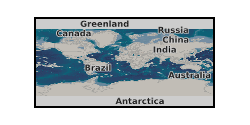
Contains 6 SCCS technical briefings, technical letters and technical journal responses - Working Paper 2010-04: Popular response to Economides, CO2 storage is feasible; Working Paper 2010-05: Formal response to Economides, CO2 storage is feasible; Working Paper 2010-07: Comment on Little and Jackson: Potential Impacts of Leakage from Deep CO2 Geosequestration on Overlying Freshwater Aquifers; Working Paper 2012-01: Comment by Stuart Haszeldine on Zoback and Gorelick; Working Paper 2014-01: Sleipner CO2 securely stored deep beneath seabed, in spite of unexpected Hugin fracture discovery; Working Paper 2015-02: Carbon Dioxide Transport Plans for Carbon Capture and Storage in the North Sea Region - A summary of existing studies and proposals applicable to the development of Projects of Common Interest.
-
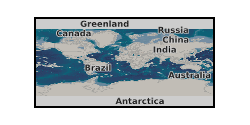
This Microsoft Excel document contains 8 worksheets providing data produced by research as part of EPSRC Grant #EP/K036033/1. These data are presented and discussed in the manuscript "The Inherent Tracer Fingerprint of Captured CO2." by Flude, S. Györe, D., Stuart, F.M., Zurakowska, M., Boyce, A.J., Haszeldine, S., Chalaturnyk, R., and Gilfillan, S. M. V. (Currently under review at IJGGC). Data include samples collected, gas concentrations, stable isotope data and noble gas data. This data relates to publication https://doi.org/10.1016/j.ijggc.2017.08.010.
-
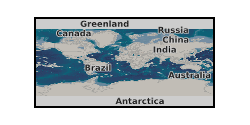
A selection of abstracts and posters presented at international conferences as part of EPSRC Grant #EP/K036033/1.
-
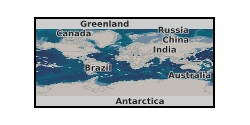
This collection comprises two time-series of 3D in-situ synchrotron x-ray microtomography (μCT) volumes showing two Ailsa Craig micro-granite samples (ACfresh02 and ACHT01) undergoing triaxial deformation. These data were collected in-situ at the PSICHE beamline at the SOLEIL synchrotron, Gif-sur-Yvette, France in December 2016 (standard proposal 20160434) and are fully explained in Cartwright-Taylor A., Main, I.G., Butler, I.B., Fusseis, F., Flynn M. and King, A. (in press), Catastrophic failure: how and when? Insights from 4D in-situ x-ray micro-tomography, J. Geophys. Res. Solid Earth. Together, these two time-series show the influence of heterogeneity on the micro-crack network evolution. Ailsa Craig micro-granite is known for being virtually crack-free. One sample (ACfresh02) remained as-received from the quarry until it was deformed, while the second (ACHT01) was slowly heated to 600 degC and then slowly cooled prior to deformation in order to introduce material disorder in the form of a network of nano-scale thermal cracks. Thus these two samples represent two extreme end-members: (i) ACfresh02 with the lowest possible (to our knowledge) natural pre-existing crack density, and so is a relatively homogeneous sample and (ii) ACHT01 with a thermally-induced nano-crack network imprinted over the nominally crack-free microstructure, and therefore has increased heterogeneity relative to ACfresh02. Each 3D μCT volume shows the sub-region of each sample in which the majority of damage was located and has three parts. Part one is reconstructed 16-bit greyscale data. Part two is 8-bit binary data showing individual voids (pores and micro-cracks) in the dataset after segmentation. Part three is 32-bit data showing the local thickness of each void, as in Cartwright-Taylor et al. (in press) Figures 4 and 5. Each part is a zip file containing a sequence of 2D image files (.tif), sequentially numbered according to the depth (in pixels, parallel to the loading axis) at which it lies within the sample volume. File dimensions are in pixels (2D), with an edge length of 2.7 microns. Each zip file is labelled with the sample name, the relevant letter for each 3D volume as given in Cartwright-Taylor et al. (in press) Tables 3 and 4, part 1, 2 or 3 (depending whether the data are greyscale, binary or local thickness respectively), the differential stress (MPa) on the sample, and the associated ram pressure (bar) to link with individual file names. The following convention is used: sample_letter_part_differentialstress_rampressure_datatype. Also included are (i) two spreadsheets (.xlsx), one for each sample, containing processing parameters and the mechanical stress and strain at which each volume was scanned, and (ii) zip files containing .csv files containing measurement data for the labelled voids in each volume. N.B. void label numbers are not consistent between volumes so they can only be used to obtain global statistics, not to track individual voids.
-
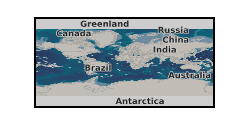
This dataset shows both the micro-scale mechanisms and acoustic response involved in shear failure of a deforming porous rock. To our knowledge, this is the first such dataset to combine simultaneous acoustic measurements and x-ray tomography imaging. It comprises a time-series of 3D in-situ synchrotron x-ray microtomography (µCT) volumes showing a Clashach sandstone sample (CL10) undergoing triaxial deformation to failure under a constant acoustic emissions (AE) event rate. Use of a constant AE event rate slowed down the failure process after peak stress, enabling shear failure to be captured in unprecedented spatio-temporal detail by the µCT volumes. These volumes are accompanied by the local incremental 3D strain fields and simultaneously acquired waveforms from acoustic emissions and ultrasonic velocity surveys, as well as mechanical bulk stress and strain. These data are fully explained in Cartwright-Taylor et al. Seismic events miss important grain-scale mechanisms governed by kinematics during shear failure of porous rock, in review at Nature Communications. We also include an equivalent time-series of the same data types showing a second Clashach sandstone sample (CL04) undergoing triaxial deformation to failure, this time under a constant strain rate where failure happened abruptly, shortly after peak stress. Both collections were acquired in-situ on the beamline I12-JEEP at the Diamond Light Source, Didcot, UK, in September 2019. Each 3D µCT volume of the sample is contained in a .zip file labelled with the sequential scan number. Each volume comprises reconstructed 16-bit grey-scale data in a sequence of 2D image files (.tif), each numbered according to the depth at which it lies within the sample volume. The file dimensions are pixels, with an edge length of 7.91 µm. Two further .zip files contain the incremental 3D volumetric and deviatoric strain fields, obtained from digital volume correlation between neighbouring µCT volumes. Each strain field consists of a 32-bit 3D image file (.tif) in pixels with an edge length of 316.4 µm, labelled with its scan increment. Also included are (i) .csv files, containing the mechanical stress and strain time-series, the time and mechanical data at which each µCT volume was scanned, and the acoustic emissions event rate data, and (ii) .zip files containing times and waveforms for the acoustic emissions and ultrasonic velocity surveys as .ascii files. The .zip and .xlsx files are labelled with the sample name, the data type (grey-scale, strain-volumetric, strain-deviatoric, seismic, mechanical, mechCT, eventrateAE) and the sequential scan number (grey-scale only) according to the following convention: sample_datatype_scan#. We acknowledge Diamond Light Source for time on beamline I12-JEEP under proposal MG22517. This work is supported by the UK's Natural Environment Research Council (NERC) through the CATFAIL project NE/R001693/1 Catastrophic failure: what controls precursory localisation in rocks?
-
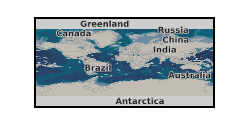
Posters and presentations from the UKCCSRC Call 1 Project: Mixed matrix membranes for post combustion carbon capture (Mar 2013 to Dec 2015). Membrane processes are a promising alternative to the more classical post-combustion capture technologies due to the reduced maintenance of the process, the absence of dangerous solvents and their smaller footprint. This project aims at supporting the development of new mixed matrix membranes for post-combustion applications. Mixed matrix membranes (MMMs) are composite materials formed by embedding inorganic fillers into a polymeric matrix in order to overcome the upper bound and combine the characteristics of the two solid phases: mechanical properties, economical processing capabilities and permeability of the polymer and selectivity of the filler. Despite several studies on the concept, the interactions between the two phases and their effect on the transport properties are not well understood. Yet, this fundamental knowledge is crucial in order to design the reliable materials needed for real-world-applications.
-
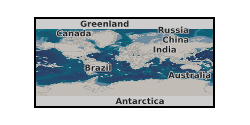
The adoption of carbon capture and storage (CCS) as a method of mitigating anthropogenic CO2 emissions will depend on the ability of initial geological storage projects to demonstrate secure containment of injected CO2. Potential leakage pathways, such as faults or degraded wells, increase the uncertainty of geological storage security. CCS as an industry is still in its infancy and until we have experience of industrial scale, long term CO2 storage projects, quantifying leakage event probabilities will be problematic. Laboratory measurements of residual saturation trapping, the immobilisation of isolated micro-bubbles of CO2 in reservoir pores, provides an evidence base to determine the fraction of injected CO2 that will remain trapped in the reservoir, even if a leakage event were to occur. Experimental results for sandstone, the most common target lithology for storage projects, demonstrate that 13–92% of injected CO2 can be residually trapped. Mineralisation, the only other geological trapping mechanism which guarantees permanent trapping of CO2, immobilises CO2 over hundreds to thousands of years. In comparison, residual trapping occurs over years to decades, a timescale which is more relevant to CCS projects during their operational phase and to any financial security mechanisms they require to secure storage permits. This is a publication in International Journal of Greenhouse Gas Control, Neil M. Burnside et. al. doi:10.1016/j.ijggc.2014.01.013.
-
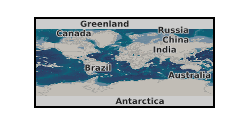
Membrane processes are a promising alternative to the more classical post-combustion capture technologies due to the reduced maintenance of the process, the absence of dangerous solvents and their smaller footprint. This project aims at supporting the development of new mixed matrix membranes for post-combustion applications. Mixed matrix membranes (MMMs) are composite materials formed by embedding inorganic fillers into a polymeric matrix in order to overcome the upper bound and combine the characteristics of the two solid phases: mechanical properties, economical processing capabilities and permeability of the polymer and selectivity of the filler. Despite several studies on the concept, the interactions between the two phases and their effect on the transport properties are not well understood. Yet, this fundamental knowledge is crucial in order to design the reliable materials needed for real-world-applications. Grant number: UKCCSRC-C1-36.
 BGS Data Catalogue
BGS Data Catalogue